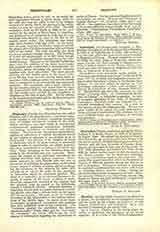

Chastellain, PIERRE, missionary among the Huron Indians, b. at Senlis, France, in 1606; d. at Quebec, August 14, 1684. He entered the Society of Jesus in 1624 and at the age of thirty sailed from France with two future martyrs, Fathers Isaac Jogues and Charles Gamier, and the new Governor of Canada, Montmagny, the successor in that post of Champlain. In July, 1636, Chastellain and Gamier left Three Rivers with the Indian trading canoes to join the mission in the Huron country. In the September following, both were attacked by smallpox, but recovered. For nearly fifty years Chastellain toiled on the mission of Canada at different stations among the Hurons as well as in Quebec. With great strength of character he combined a gentleness that was never ruffled and an unfailing charity towards others. During his laborious mission work he composed his book “Affectus amantis Christum seu Exercitium amoris erga Dominum Jesum pro tota hebdomada”, a quarto of 483 pages (Paris, 1647).
EDWARD P. SPILLANE

